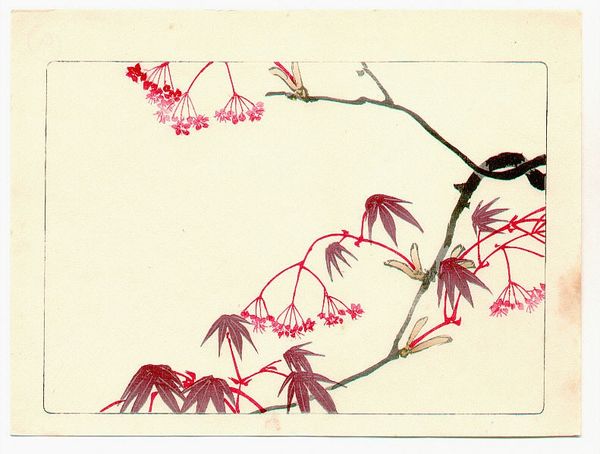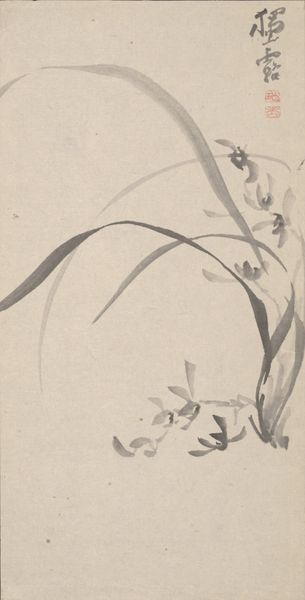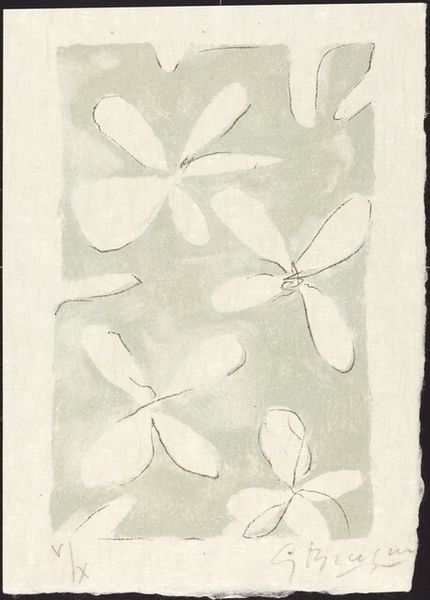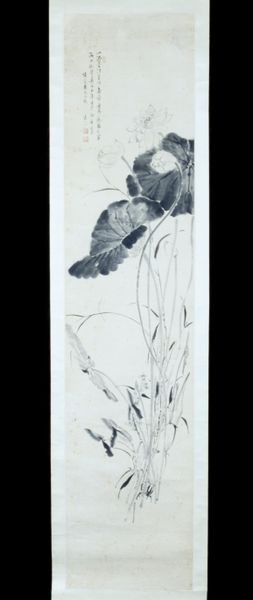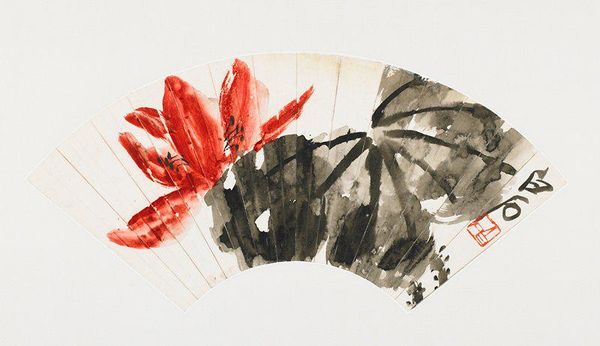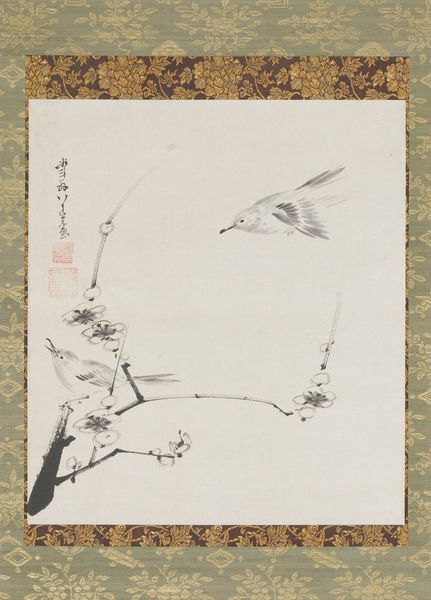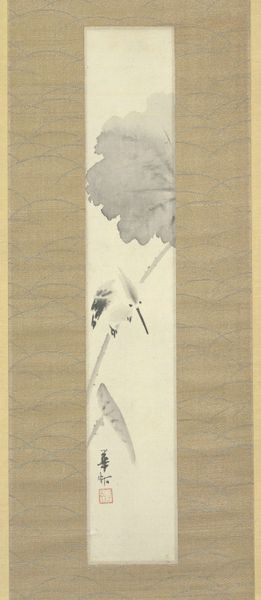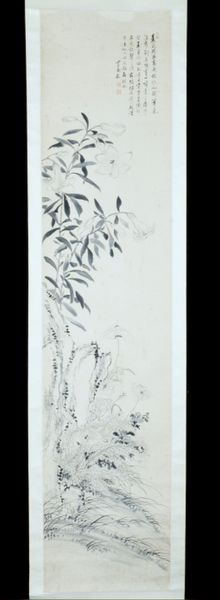
Copyright: Public domain
Curator: Looking at this image, I’m immediately struck by its simplicity and delicacy. It’s quiet, almost ethereal. Editor: Let's provide some context. What we’re seeing is titled "Nandin Tree - Hana Kurabe," a woodblock print created around 1890 by Shibata Zeshin, a pivotal figure in Japanese art of the Meiji period. Zeshin’s works offer fertile ground for understanding cultural negotiation amid modernization. Curator: The social impact of his engagement with natural imagery really stands out here. What appears decorative actually communicates something profound. To me, there's a strong statement about nature's perseverance embedded here. Despite the harshness implied by the snow, the bright red berries and the green leaves bravely declare life's persistence. Editor: That reading aligns nicely with an understanding of the rise of Japanese nationalism at the time. I agree – but the role of this piece within broader cultural institutions and art market trends seems especially relevant here. Zeshin's pieces found significant appeal both within Japan and amongst Western collectors. They were carefully placed to reinforce specific national identities during an era of increased globalization. The "ukiyo-e" aesthetic contributed to the international market that was increasingly defining the Meiji era. Curator: I find it fascinating how the composition and materials are used to deliver cultural metaphors, too. Note the contrast between the ink and colors. It subtly yet emphatically symbolizes not just a landscape but also a wider struggle for preservation during a period of Western assimilation. It seems to assert its unique aesthetics at the same time it subtly integrates global consumption values. Editor: Exactly. What might look like a traditional winter scene is anything but. Consider also how accessible the woodblock print format made this art—and these ideologies—to a wider public audience. What were once exclusive fine arts practices were rapidly entering a new market economy for both consumers and the creation of new imagery that helped communicate an evolving set of beliefs. Curator: It really brings a lot into view: gender, race, cultural identity, nature. You’ve helped bring into relief this quiet print's dynamic presence as an instrument for dialogue. Editor: Yes. Studying “Nandin Tree” allows us to examine the complex relationships between art, cultural expression, political intentions and economics. All those themes contribute to creating the modern society that persists to this day.
Comments
No comments
Be the first to comment and join the conversation on the ultimate creative platform.
